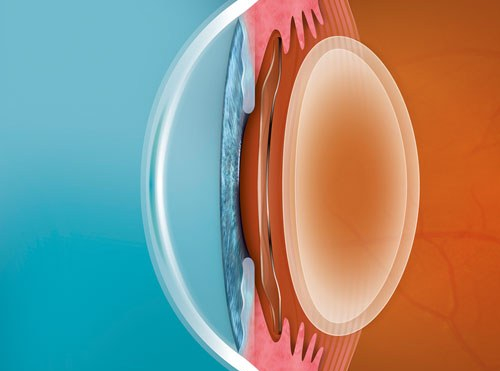
If you are seeking freedom from dependence on glasses or contacts, it is important to learn about your options and choose the procedure that is best for you. Many people pursue vision correction surgery with a goal of simplifying their routine or enhancing an active lifestyle, so it makes sense that recovery time is a factor in the decision to have LASIK, PRK, or EVO ICL Lens™. Our vision correction experts at EVO ICL Lens Practices in ____location____ explain what you can expect during recovery from different types of vision correction surgery.
The first thing to keep in mind is that every patient is unique and your individual experience with recovery after vision correction surgery may vary. You can increase your chances of a quick recovery and a good outcome by following all of your eye doctor’s postoperative instructions.
LASIK laser vision correction surgery improves vision by reshaping the cornea. Immediately after surgery, patients often experience some discomfort, mild pain, and blurry vision; it is recommended that you take several days off of work after LASIK.[1] Your LASIK surgeon will advise you to avoid certain activities, such as strenuous exercise or swimming, for several weeks after your procedure.
EVO ICL Implantable Collamer® Lens is an innovative vision correction procedure in which a biocompatible lens is implanted in the eye through a tiny opening in the cornea. EVO ICL can improve moderate to severe myopia (prescription between –3D and –20D for nearsightedness) and astigmatism (within a range of 1.0D and 4.0D). EVO ICL is often an option for many patients who are not candidates for LASIK due to thin corneas, high level prescriptions, or dry eye concerns.
Recovery after EVO ICL is typically quick, with most patients resuming regular activities within days after the procedure. Patients love that there is minimal downtime needed and, unlike LASIK or PRK, EVO ICL can be removed by a doctor, if needed.
PRK (Photo-Refractive Keratectomy) is often seen as a traditional LASIK alternative because it can be performed on patients who cannot have LASIK due to thin corneas. Like LASIK, vision improvement is achieved by permanently reshaping the cornea. The difference is that instead of using a laser to create a flap in the cornea, PRK removes the outermost layer of the cornea. Patients are required to wear a bandage contact lens to protect the eye for 3-5 days while the tissue grows back, during which they will likely experience some discomfort, and they will need to use special eye drops for up to a month after surgery.[2]
Take the first step to better vision by learning more about your options. Contact us with any questions or to schedule a consultation appointment.